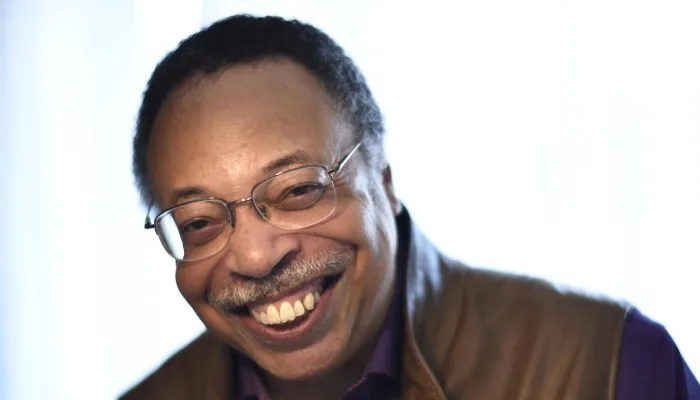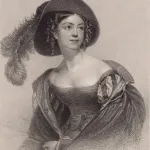The air smells of rhubarb, occasional
Roses, or first birth of blossoms, a fresh,
Undulant hurt, so body snaps and curls
Like flower. I step through snow as thin as script
Watch white stars spin dizzy as drunks, and yearn
To sleep beneath a patchwork quilt of rum.
I want the slow, sure collapse of language
Washed out by alcohol. Lovely Shelley,
I have no use for measured, cadenced verse
If you won’t read. Icarus-Iike, I’ll fall
Against this page of snow, tumble blackly
Across vision to drown in the white sea
That closes every poem — the white reverse
That cancels the blackness of each image.
Set in Halifax of the 1930s, this sensual, inebriated love poem plays with the sonnet form.
- What season of the year is the poem set in? How does that shape the mood of the poem?
- “Blank Sonnet” is part of a novel-in-verse set in the 1930s in rural Nova Scotia. What sensual details help you imagine this setting?
- George Elliott Clarke writes in his micro-interview: “But as a black kid growing up in Halifax, NS, it was the African-American poets — available in my local library and leftist bookstores — I took to quickest.” The two central colours represented in the poem are black and white. What symbolic role do you think they play in this poem?
- “Blank verse” is iambic pentameter but no fixed rhyme scheme. “Blank Sonnet” is written in blank verse. In what ways do you feel that the play on words between the poem title and this poetic device contributes to the richness of the poem’s meaning?
- This poem has a meter but no end-rhyme. As you recite the poem, how do you plan to mark the end of each line: do you plan to pause at each line break, or to read through the line breaks to the end of each grammatical phrase to help listeners follow the meaning? Which style of delivery do you think best serves the poem? Which style feels more natural to you?
- Write your own poem in blank verse – you’ll find this form less tricky than forms where you need to use a fixed rhyme scheme. As a nod to this poem, try using colour as a symbol in your poem. How does your choice of colour reflect your own personal background?
Useful Links
It may help you to know that the narrator in this poem is a poet himself, and that the Shelley who is addressed as “you” in the poem is one of the characters in the novel-in-verse named after the British poet Percy Bysshe Shelley.
Clarke refers to the myth of the fall of Icarus. British poet W. H. Auden wrote a well-known poem called “Musée des Beaux Arts,” which refers to Pietre Breugel’s “Landscape with the Fall of Icarus,” an equally well-known painting that depicts the myth. The American poet William Carlos Williams also wrote a poem about the painting.
Watch this interview with George Elliott Clarke as he reads his poetry and discusses his experience growing up in Halifax.
George Elliott Clarke, “Blank Sonnet” from Whylah Falls, 2nd ed. Copyright © 2000 by George Elliott Clarke. Reprinted by permission of the author.
Source: Blues and Bliss: The Poetry of George Elliott Clarke (Wilfrid Laurier University Press, 2008).





